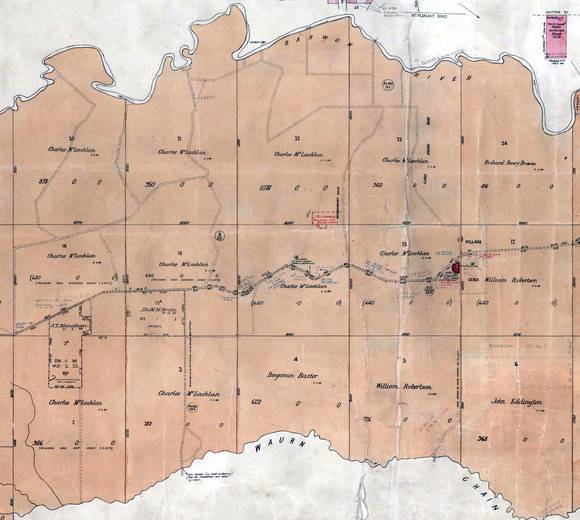| Back to search results » | Back to search page » |
|
Former Wesleyan Church
Statement of Significance
What is Significant?
The significant fabric of the former Wesleyan Church includes the
gabled roof forms, Barrabool stone wall construction, slate roof
cladding, square-headed timber framed twelve paned double hung windows
(the windows at the west end being lower, reflecting the original
lower ceiling internally to allow for a mezzanine), dressed stone
quoinwork, stone tablets in the gable ends, four panelled timber
entrance door and the dressed stone window sills.
How is it significant?
Why is it significant?
The former Wesleyan Church, 17 McCann Street, has aesthetic
significance as rare, intact, representative example of its type
(Criterion D). The Wesleyan philosophy of 'earnest piety and dislike
of frivolity' is embodied in the surviving physical building fabric.
The vernacular Victorian Georgian church reflects non-conformist
meeting house design ideology, typical in mid 19th century Victoria in
its modest scale and unpretentious character. This building is the
only intact surviving example of the 1850s of the Wesleyan Church in
Geelong, as part of the Geelong Circuit. The former Wesleyan Church building, 17 McCann Street, has scientific
significance for its distinctive Barrabool stonework that was quarried
nearby the church site, and while ubiquitous for building construction
throughout Victoria (and especially the Barrabool Hills) in the 19th
century, is now a material no longer employed (Criterion F). The former Wesleyan Church, 17 McCann Street, while no longer
functioning for its original church purpose, has social significance
as a physical legacy of its enduring role in the Wesleyan Methodist
(and later Uniting Church) faith and faith education at Ceres from
1855 until 2016 (Criterion G).
The former Ceres Wesleyan Church, 17 McCann Street, has
significance as a tangible legacy of the life and witness of the
Wesleyan Methodist Church in the village of Ceres from 1855 until
2016, and as a denominational school from 1855 until 1875. Built in
1855, the former Wesleyan Church building is the only intact surviving
1850s church building as part of the Geelong Wesleyan Circuit, and a
rare surviving rural example of its type in the Geelong region.
The former Wesleyan Church, 17 McCann Street, Ceres, is
historically, aesthetically, scientifically and socially significant
at a LOCAL level.
The former Wesleyan Church, 17 McCann Street, has historical
significance for its enduring associations as a rare surviving example
with the Wesleyan movement, from the earliest days of the development
of the village of Ceres in the 1850s, to the evolution and development
of the Methodist Church throughout the 20th century, and as part of
the life and witness of the Uniting Church from 1977 until 2016
(Criteria A & B). The former Wesleyan Church was built in 1855 as
part of the Geelong Circuit to service the locally notable number of
Wesleyans, most of whom were also part of the Temperance Movement. In
particular, the church has associations with Nicholas McCann,
inaugural Church Trustee and significant benefactor who helped finance
the construction of the Church building and provide the local
Barrabool stone (Criterion H). The former Wesleyan Church also has
associations with other notable figures in its early evolution,
including the Rev. Isaac Harding, Wesleyan Minister responsible for
the building of a number of Wesleyan chapels in the Geelong Circuit,
inaugural Trustee and first Minister responsible for providing
pastoral care to the Wesleyans at Ceres; other original Trustees
including Ezra Firth, quarryman, Peter McCann, quarryman, and Joseph
Armitage, farmer; A.M. Hope, original architect (Criterion H).
Group
Religion
Category
Church


















